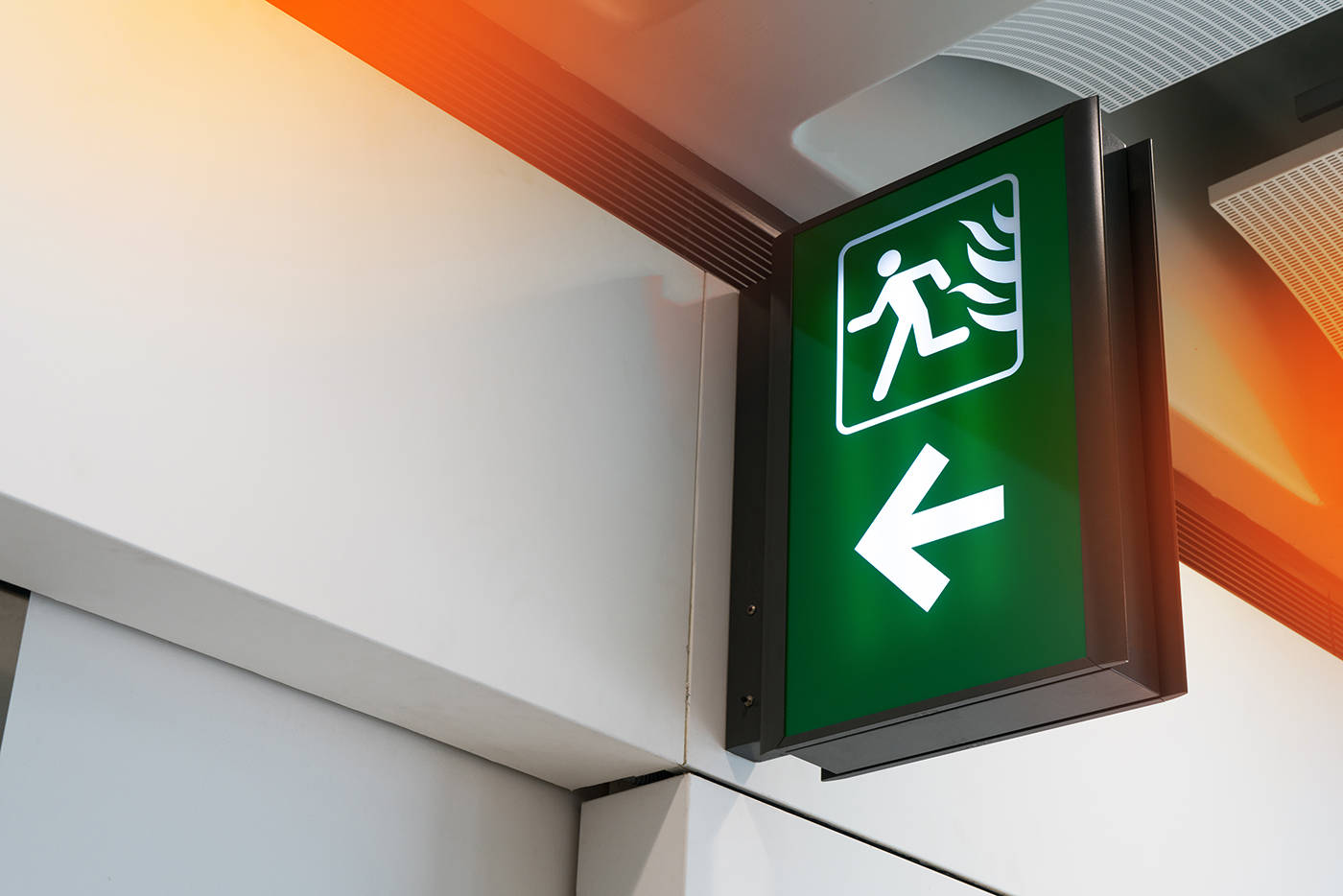Emergency lighting is a statutory requirement for all commercial businesses. If you are the responsible person in your organisation for fire safety and need to meet regulation such as: the Regulatory Reform (Fire Safety) Order 2005 (RRO). Discuss with Churches Fire & Security, how we can provide practical advise and help on your buildings emergency lighting. Find out how inspection, testing and a monthly maintenance plan is vital for your organisation.
CHURCHES FIRE & SECURITY ARE EXPERTS IN INDUSTRY STANDARD EMERGENCY LIGHTING TO GUIDE YOUR CUSTOMERS AND STAFF TO SAFETY IN AN EMERGENCY
When would you need emergency lighting?
According to the Regulatory Reform (Fire Safety) Order 2005 (RRO), it is a requirement to provide emergency lighting in non-domestic buildings and in the common areas of a House of Multiple Occupancy to illuminate emergency exits and escape routes in case of a lighting failure. Churches Fire & Security can ensure you are fully compliant and help keep your employees or occupants safe.
Emergency lighting regulations
All of our emergency lighting systems conform to the recommendations in BS 5266. With Churches Fire & Security, we guarantee to advise on the best quality products that adhere to British Standards.
Servicing and maintenance
All emergency lighting systems should be tested monthly, by isolating the supply to the lighting circuit to ensure that all lights are fully functioning. This is usually performed by the customer. Our skilled technicians ensure all systems are serviced to BS 5266 at least annually.
During a fire, it is important that you are able to evacuate a building quickly and safely, and a fully functioning emergency lighting system is vital in enabling this. Choose Churches Fire & Security for emergency lighting that you can trust.
Learn more about how Churches Fire & Security design, install and maintain Emergency Lighting Systems in our downloadable pdf.
Download Emergency Lighting Info
As part of your fire safety maintenance, you should be testing your emergency lighting monthly.
Learn what you should be looking for in our short video guide.
PLEASE NOTE: This video was created in 2019, and all equipment displayed was correct and in use at the time of recording. For example, the signage is still part of the Standard EC/92/58 “Euro” signage scheme.
Emergency Lighting and Fire Risk Assessments
Publication of the 2011 amendment of BS 5266-1 introduced a change in the frequency for carrying out planned preventative maintenance on emergency lighting systems which are powered by batteries. One particular aspect of this change has led to concerns arising during fire risk assessments over the provision of emergency lighting during the hours immediately following maintenance.
The 2016 edition of BS 5266-1 recommends that each emergency light is subjected to a full-duration test once each year. The implication of this is that there will be no emergency lighting until sufficient recharge has taken place which could mean that many buildings cannot be safely occupied until emergency lighting is working again.
Recommendations:
Unless there are overriding reasons to do otherwise, when carrying out fire risk assessments and preparing fire strategy reports, consultants should recommend that emergency lighting is subjected to six-monthly partial battery discharge tests in order to ensure that buildings continue to have emergency lighting coverage during the hours immediately following planned preventative maintenance.
However, if provisions have been made by the client, Churches Fire & Security can offer a 3 hour duration full discharge test at the clients’ request.
Ian Sykes, Service Director Statement:
Emergency lighting should be checked monthly for correct operation and subjected to regular battery discharge tests and inspections by a competent technician. To avoid the need for batteries to be fully discharged, which would leave the building without emergency lighting, and therefore unable to be occupied until sufficient recharge has occurred, a six-monthly partial discharge test should be carried out on each unit. The period of discharge should be one third of the full duration of the battery.
Get a quote
Find out how much you can save on your emergency lighting servicing and maintenance with a quote based on your business requirements.
Create Quote Now
Need More Help?
Fill out your contact details and one of our colleagues will be in touch to discuss your needs.
FIRE ALARMS
Our fire alarm detection systems include smoke, heat and carbon monoxide detection, beam detection, wireless, air sampling and gas suppression.
READ MOREFIRE EXTINGUISHERS
We provide a wide range of extinguisher products including; water, CO2, foam, dry powder and wet chemical extinguishers, for use on different types of fire.
READ MOREFIRE ALARM MONITORING
Our fire alarm monitoring services ensure that help will be on hand in the case of an emergency, even when your building is empty.
READ MORE


